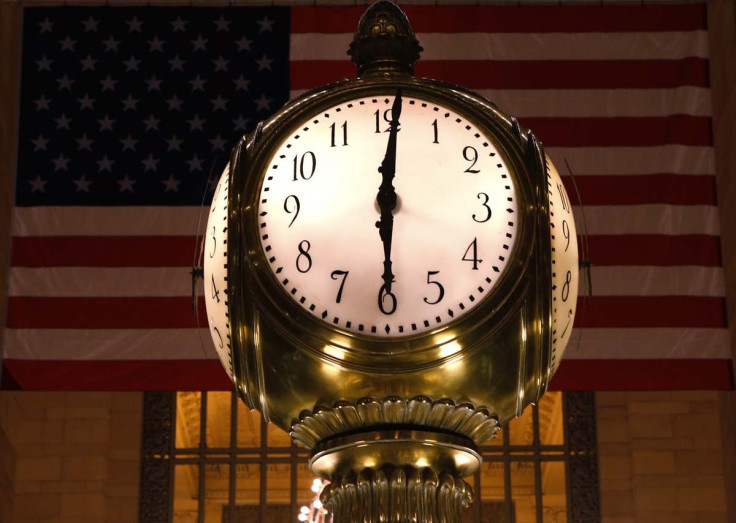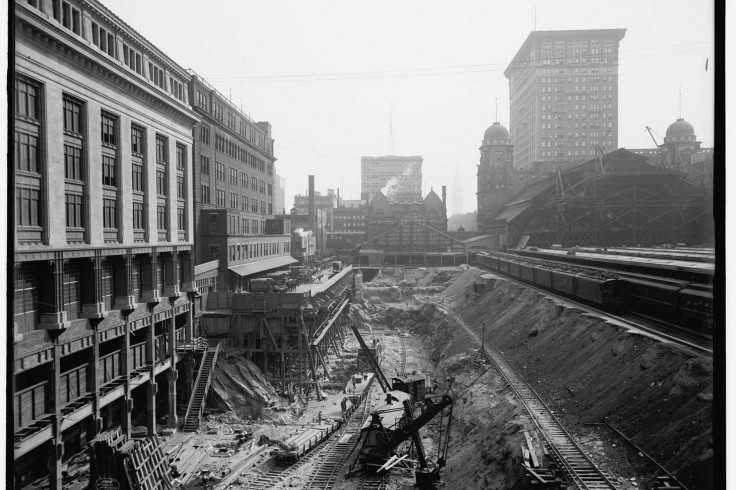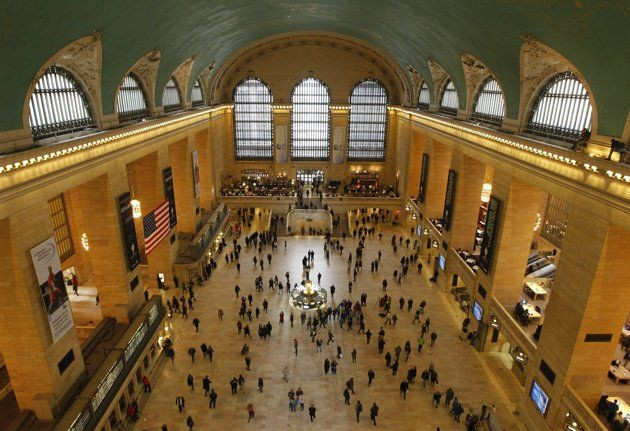Grand Central Terminal At 100: The Centennial Celebration Made Possible By Jackie Kennedy Onassis

New York’s Grand Central Terminal turns 100 on Saturday, and centennial celebrations are already underway. The iconic transit hub hosts as many as 750,000 travelers each day, or roughly the population of Charlotte, N.C. But many of the commuters who admire its grandeur may not know that the century-old terminal almost didn’t live to see its 60th birthday.
Following a decade of construction and excavation into Manhattan’s bedrock, Grand Central opened on Feb. 2, 1913. Like any landmark, it wasn’t immediately embraced -- it was mocked for being “neither grand nor central” -- but in time, New Yorkers came to love its Beaux-Arts architecture and innovative layout, which used ramps (as opposed to the traditional staircases) to allow travelers to drag suitcases more freely around the concourse.
Over the next two decades, dingy East Side warehouses gave way to a bustling metropolitan neighborhood around the terminal that included the Biltmore Hotel and the Yale Club across Vanderbilt Avenue and the Chrysler Building across Lexington Avenue. In 1947, more than 60 million people traveled through Grand Central Terminal, the equivalent of 40 percent of the country’s population.
But trouble was on the horizon. By the 1960s, rail travel fell out of favor with car-obsessed Americans, and rail companies across the country were descending into financial disarray. The New York Central Railroad, which owned Grand Central at the time, merged with the Pennsylvania Railroad to avoid bankruptcy in 1968.
That same year, the newly merged company, Penn Central Railroad, leased the terminal to real estate developer UGP Properties, which, in turn, decided it wanted to build a 55-story tower above Grand Central. The plan called for the demolition of the terminal’s main waiting room and part of the main concourse.
Ironically, it was Pennsylvania Railroad’s own folly that prevented that from happening. A few years earlier, the company allowed for the demolition of the original Penn Station, a majestic sprawl of classical Greek columns, sky-lit ceilings and granite eagle statues. Built in its place was a sterile, below-ground-level transit cave as uninspired as any structure ever conceived. The flattening of Penn Station came to be regarded as one of the worst mistakes in New York City history -- “a monumental act of vandalism against one of the largest and finest landmarks of its age of Roman elegance” -- as the New York Times put it, and mid-century New Yorkers who cared about preservation (or basic aesthetics, for that matter) never got over the shock and grief.

So when Penn Central announced its plans to do the same thing to Grand Central, the proposal drew fierce and fervent opposition, including opposition from Jackie Kennedy Onassis. Onassis’ involvement in the preservation movement drew greater awareness to the cause. Together with a group of supporters that included New Yorker writer Brenan Gill, the former first lady rallied to form the Committee to Save Grand Central Station.
A battle between the city of New York and Penn Central raged on for a decade, making it all the way to the Supreme Court. The court upheld Grand Central’s landmark status in 1978, saving it from destruction. Despite the rescue, however, Grand Central still fell into hard times in the years to come -- that is, until a revitalization effort in the early 1990s restored the terminal to its former grandeur.
In celebration of its 100th birthday, Grand Central Terminal is hosting an array of events on Friday, including sponsored giveaways, musical and dance performances, and special 1913 pricing for select items at the Grand Central Market. (Who wouldn’t pay 19 cents for a slice of cheesecake at the Oyster Bar & Restaurant?) Click here for a full schedule of events, and go appreciate the grand terminal that was almost terminated.

© Copyright IBTimes 2024. All rights reserved.






















